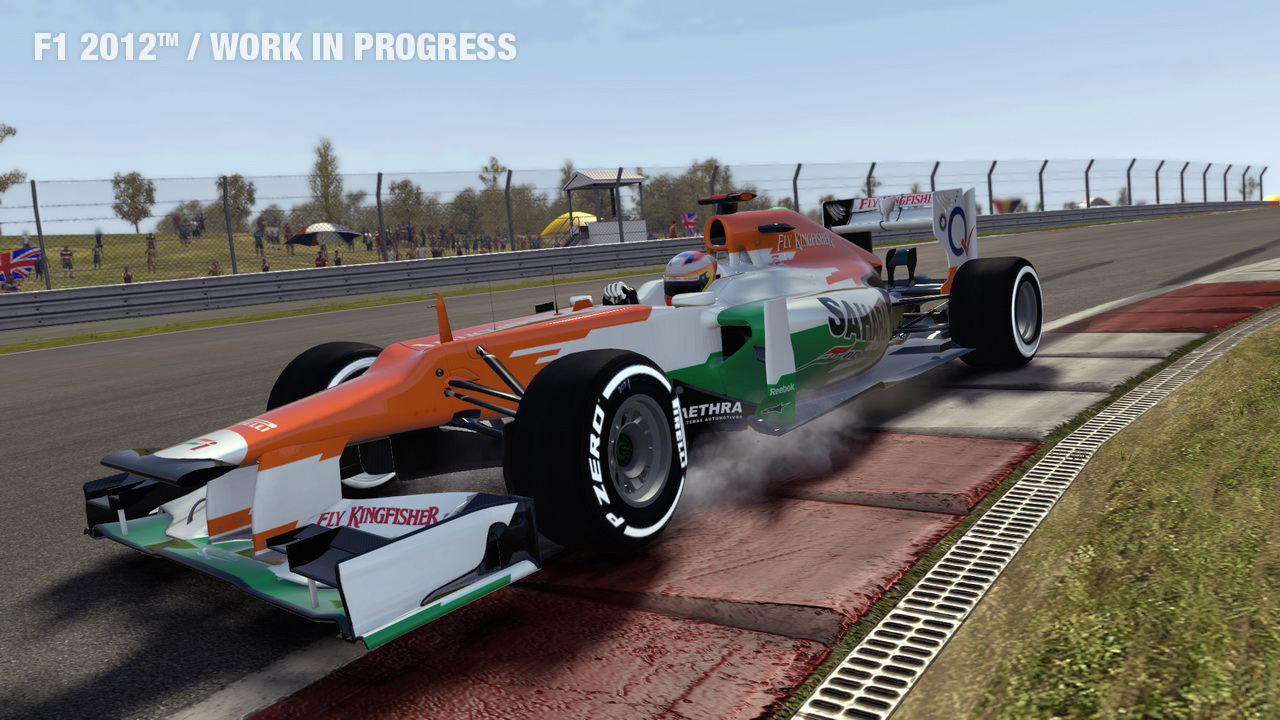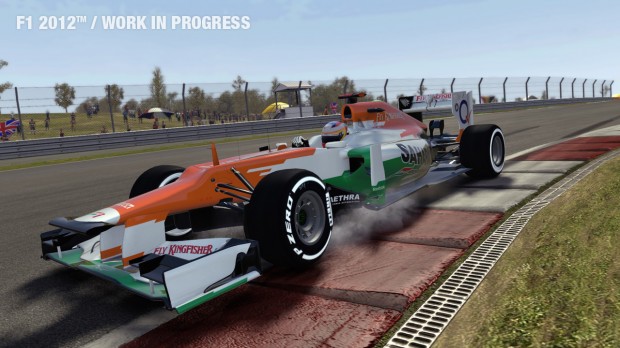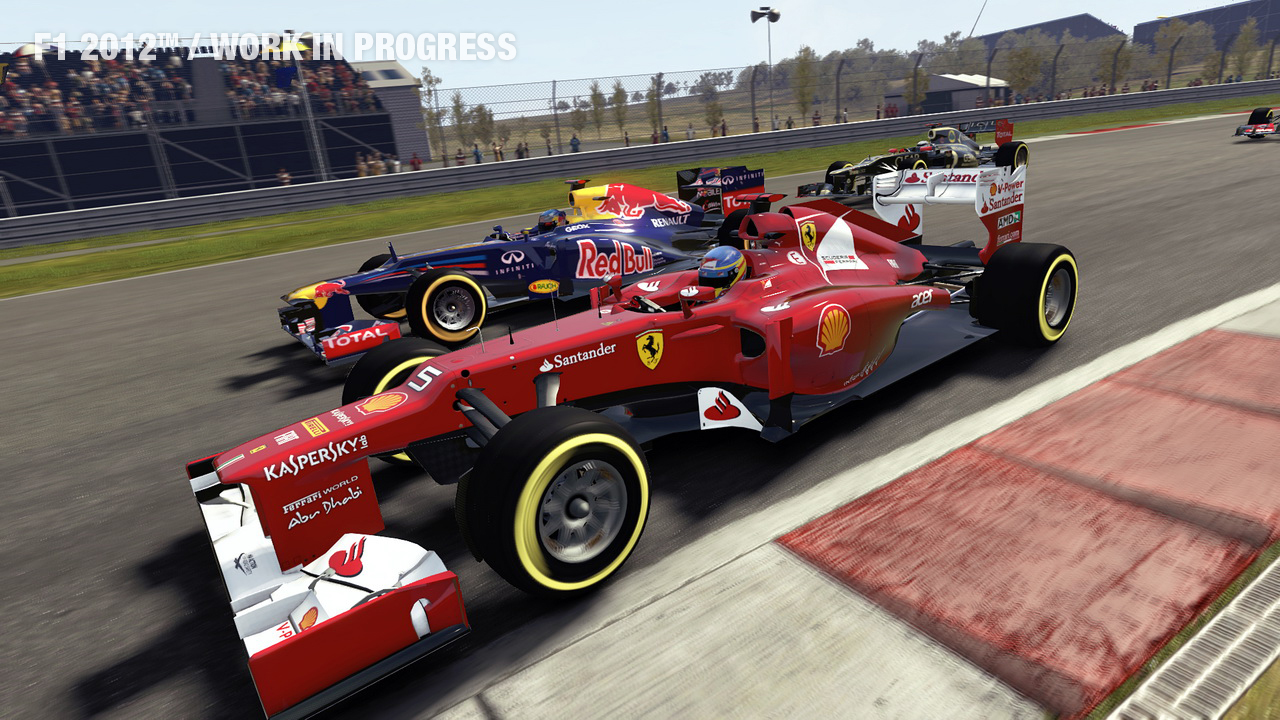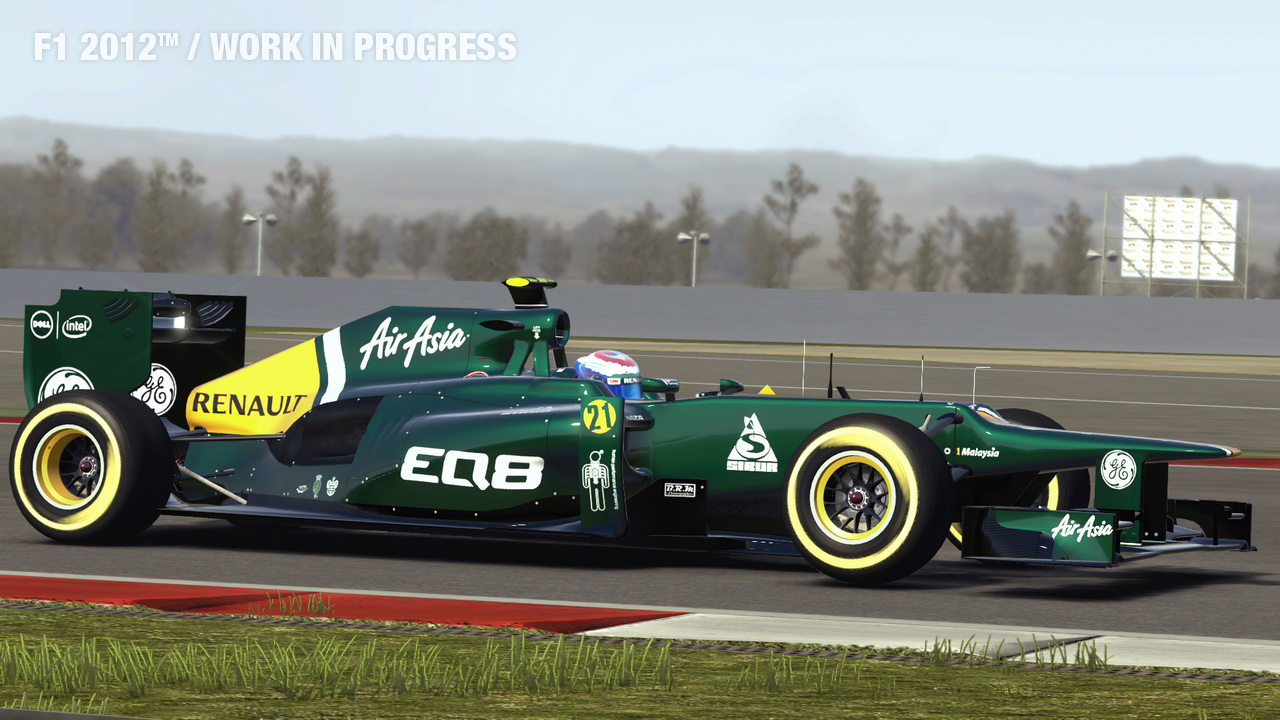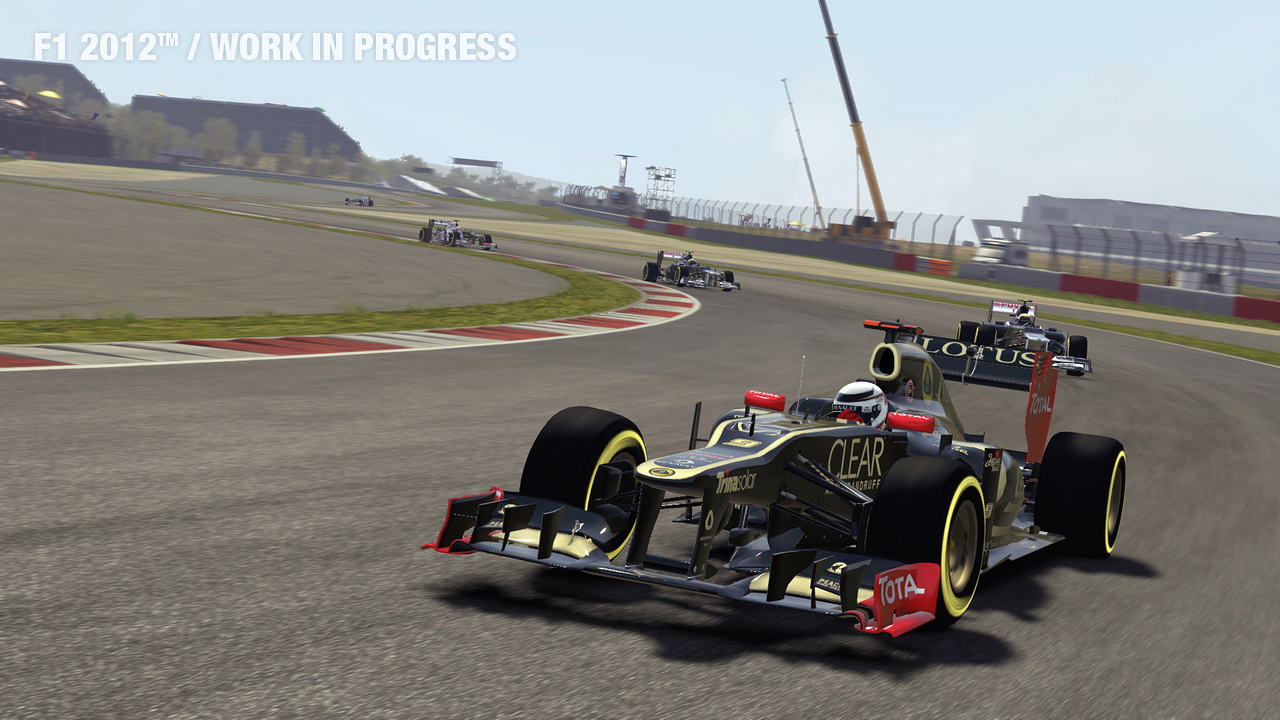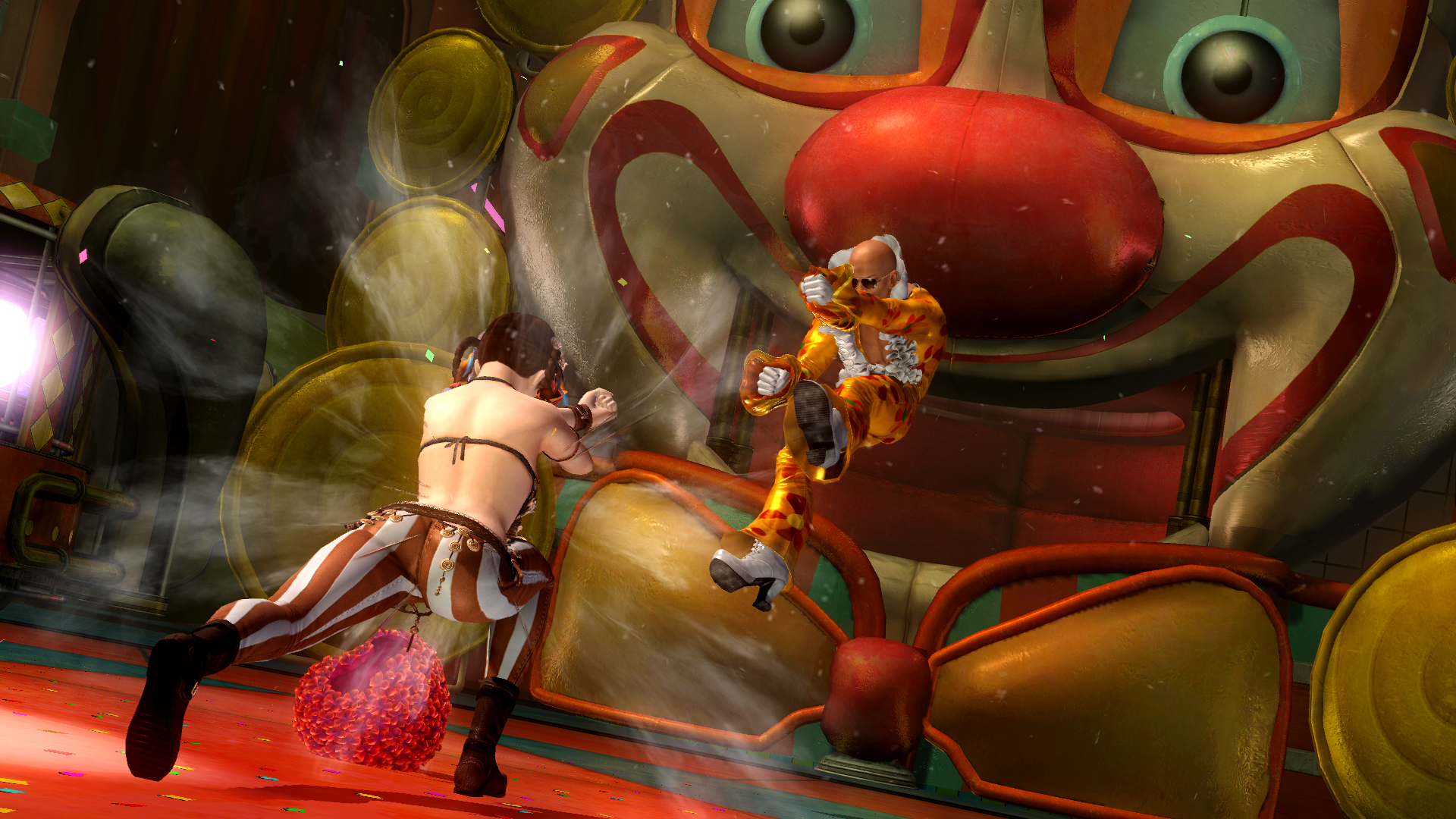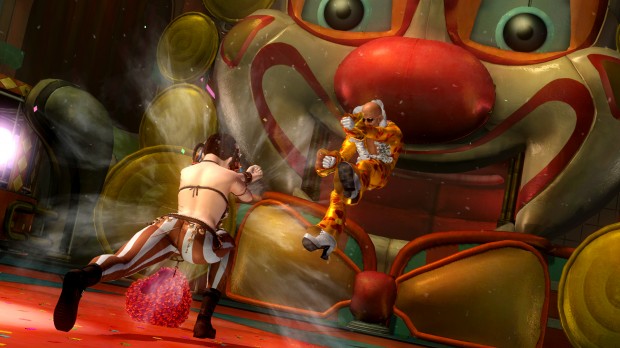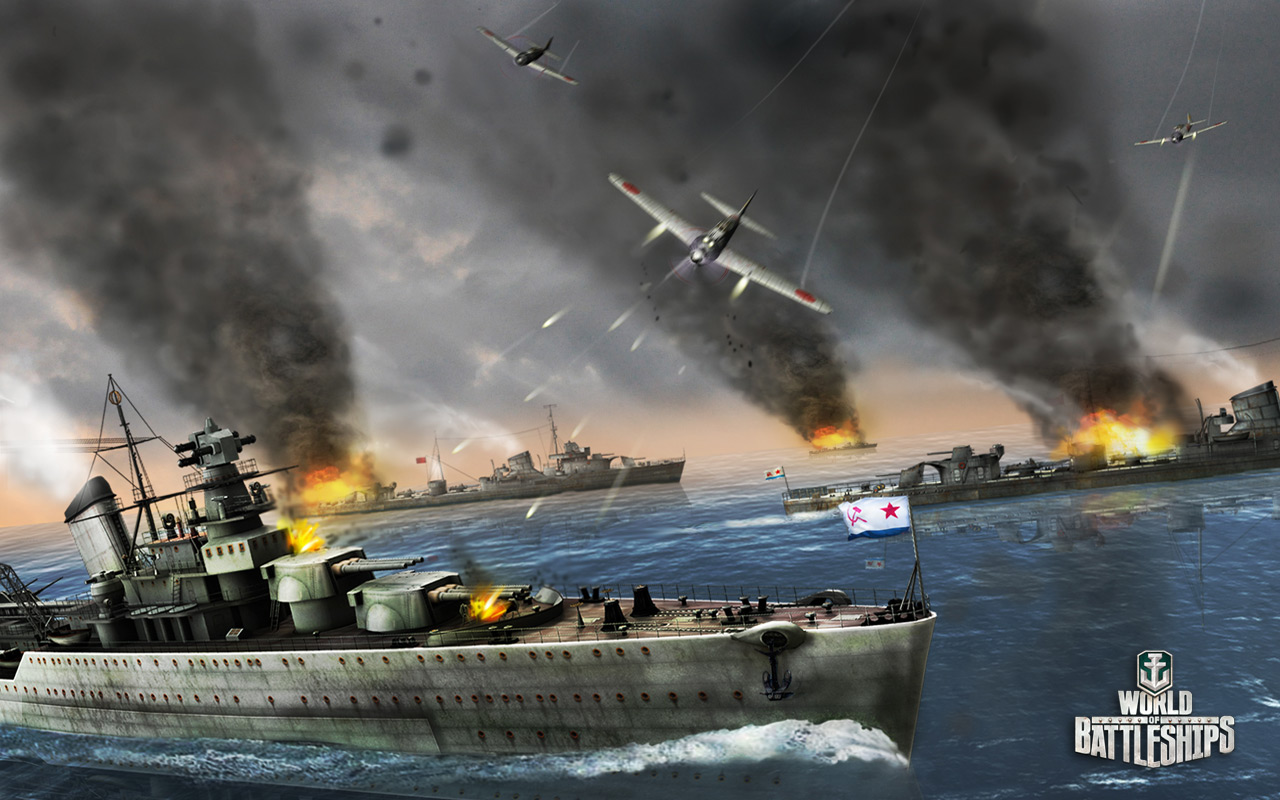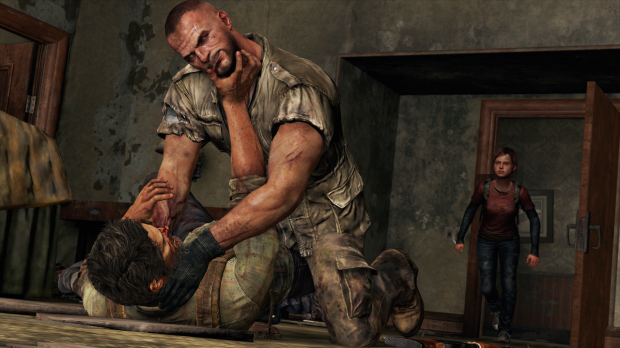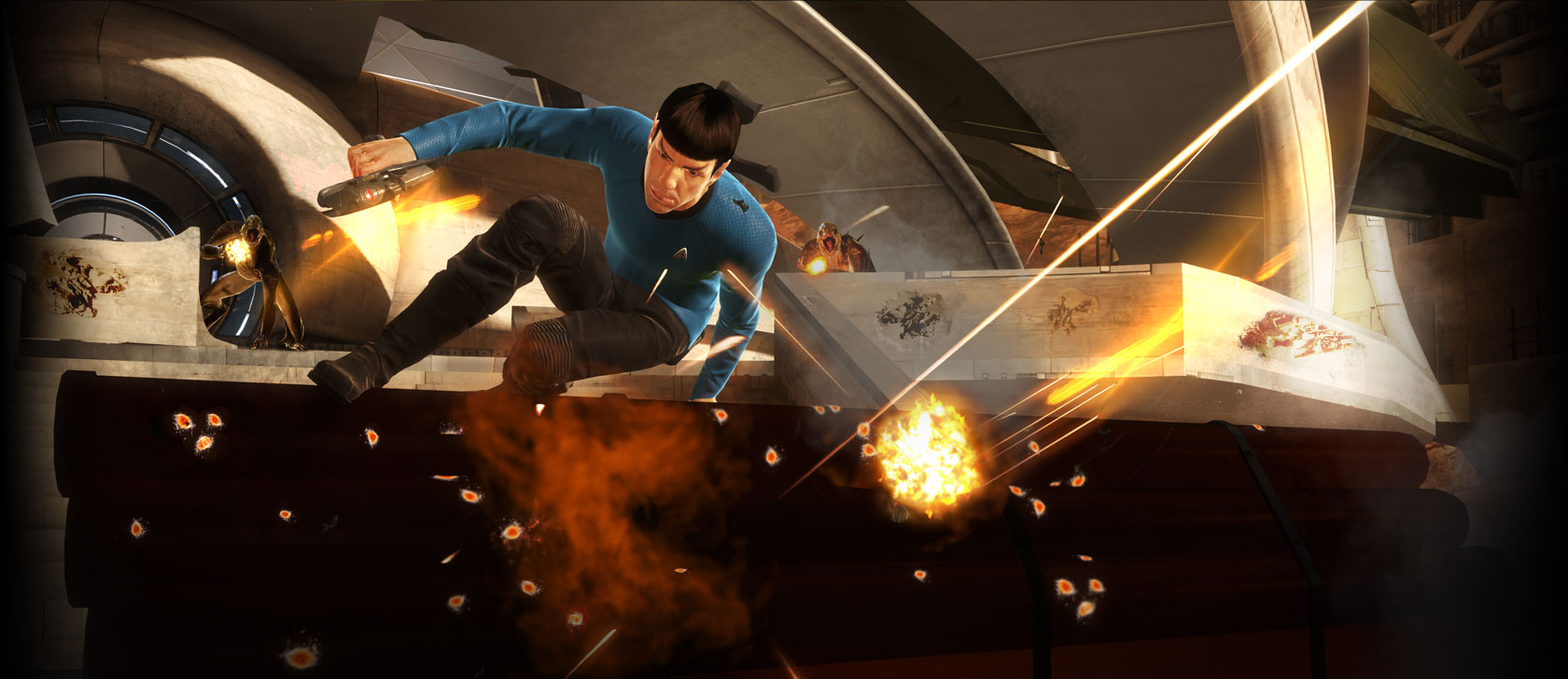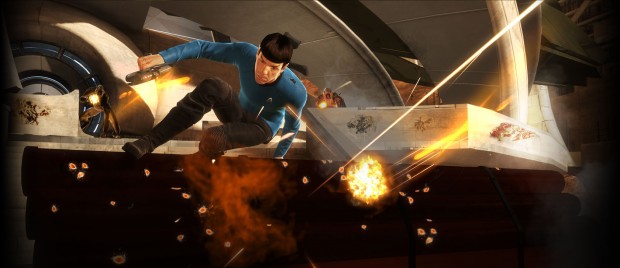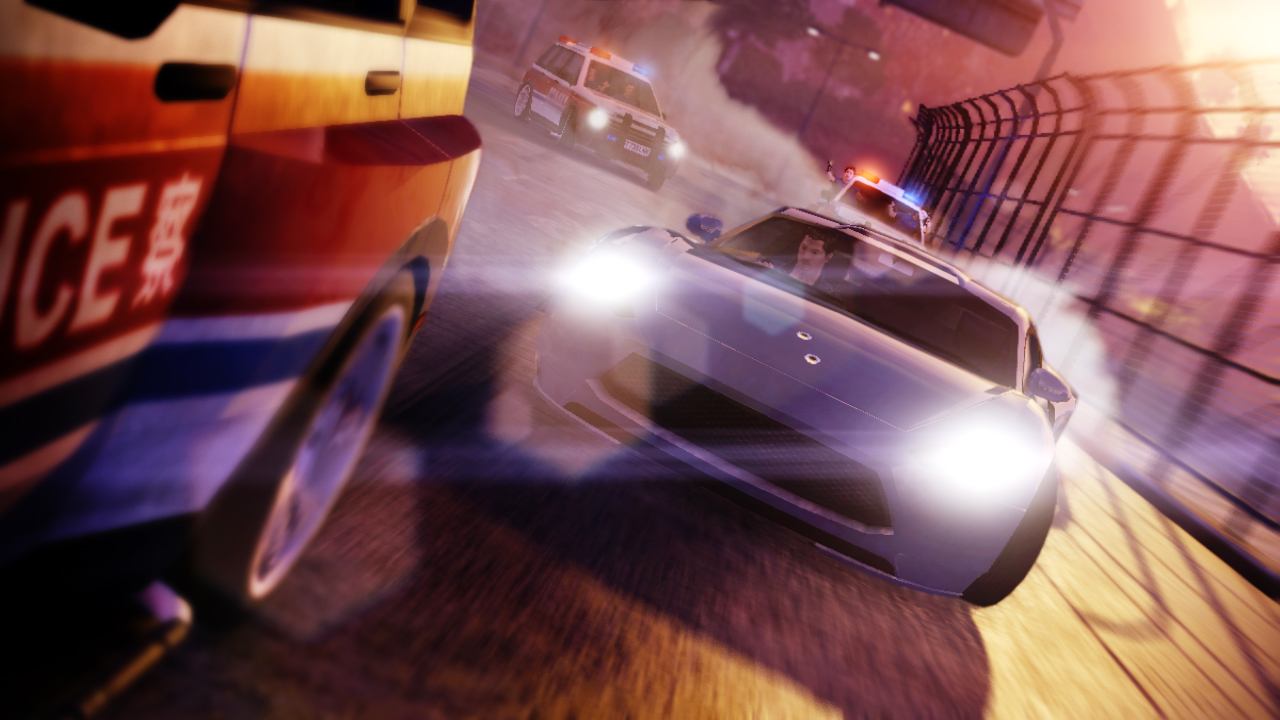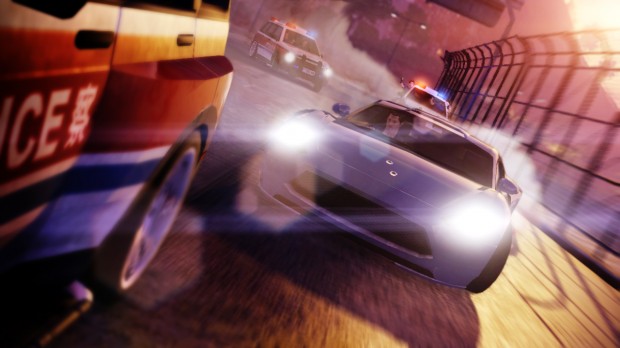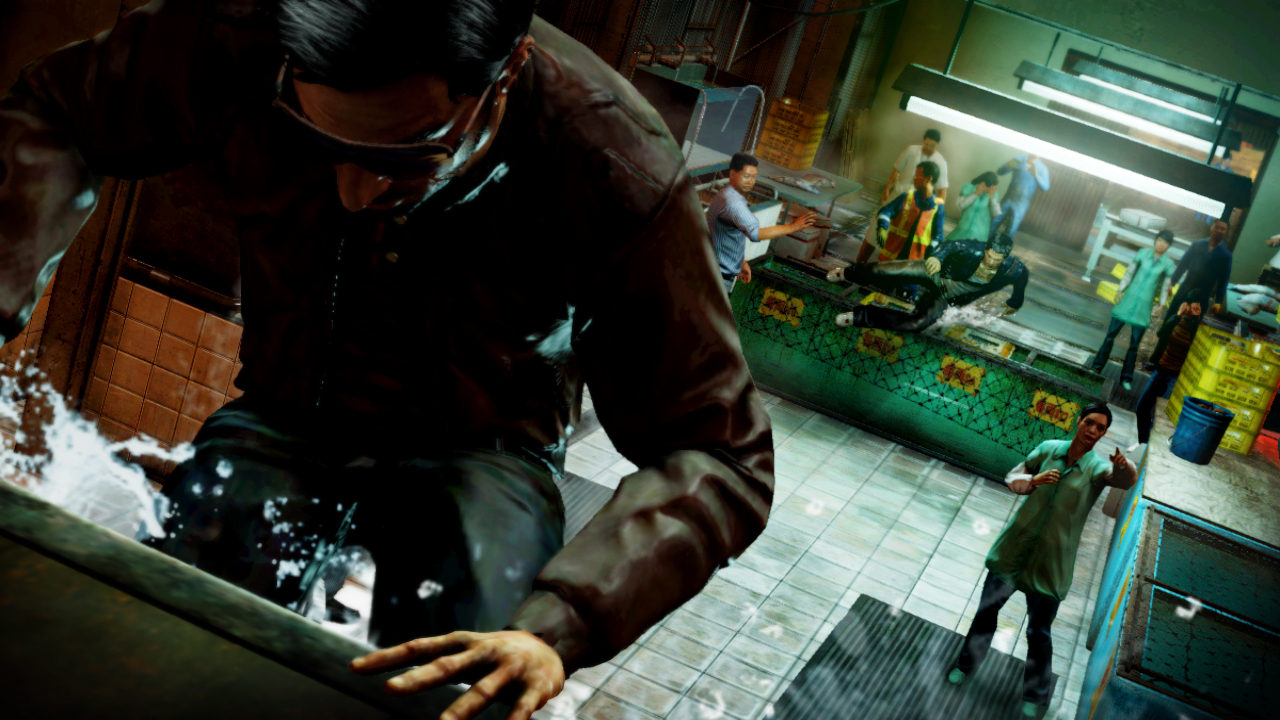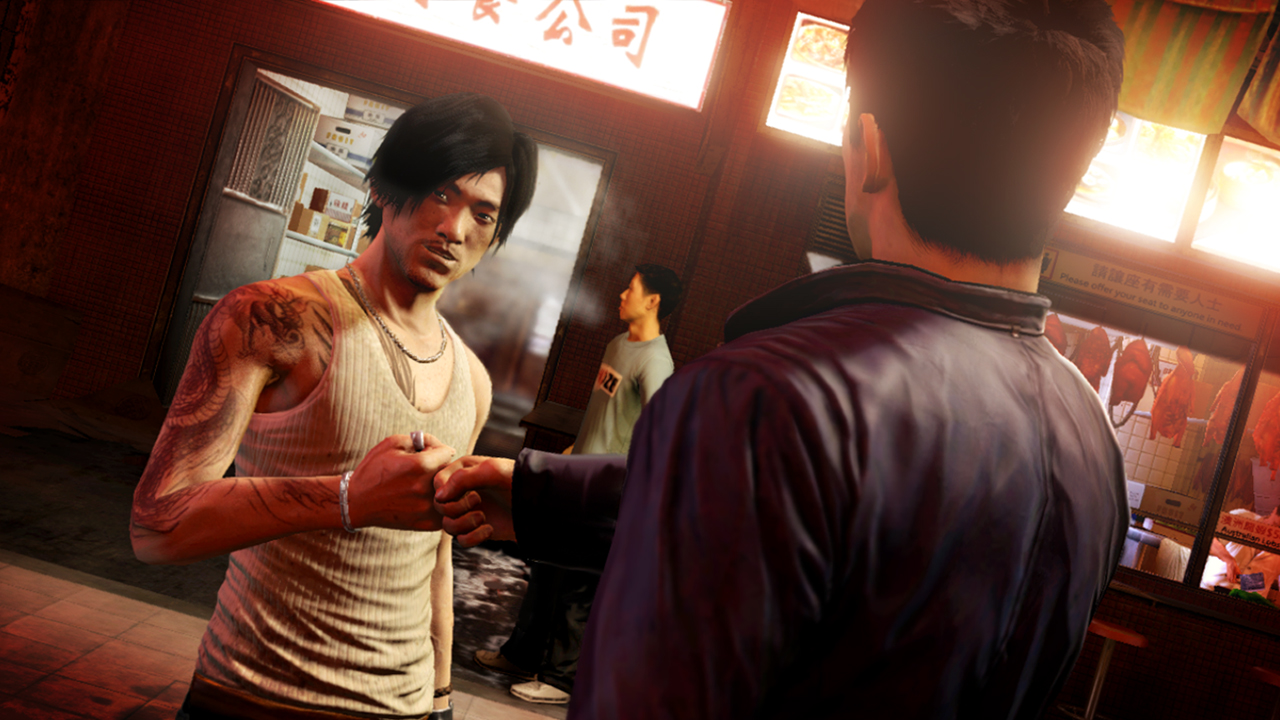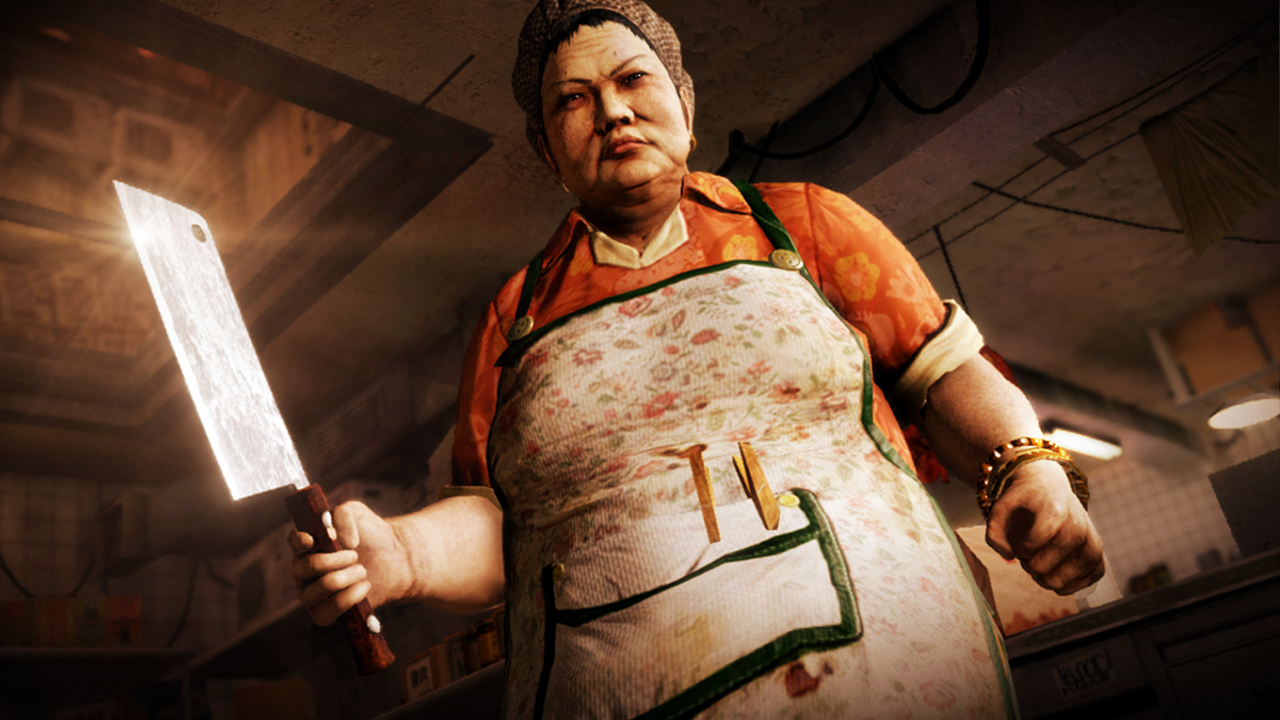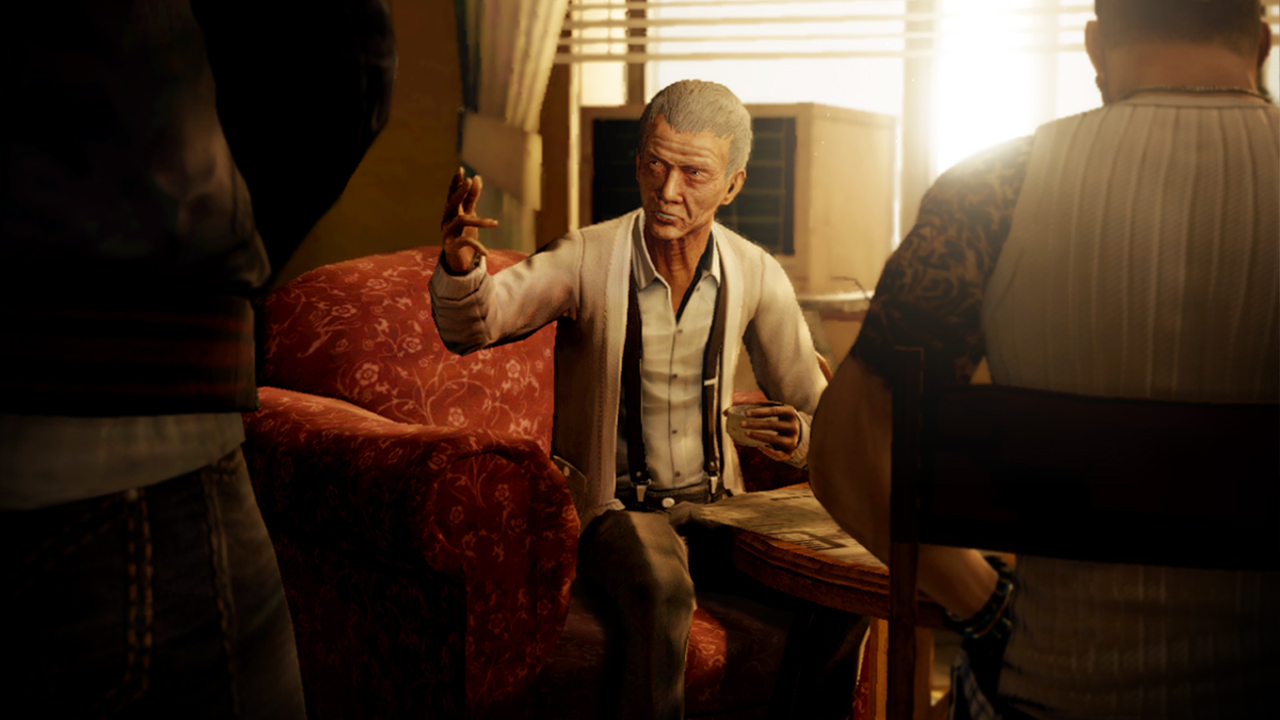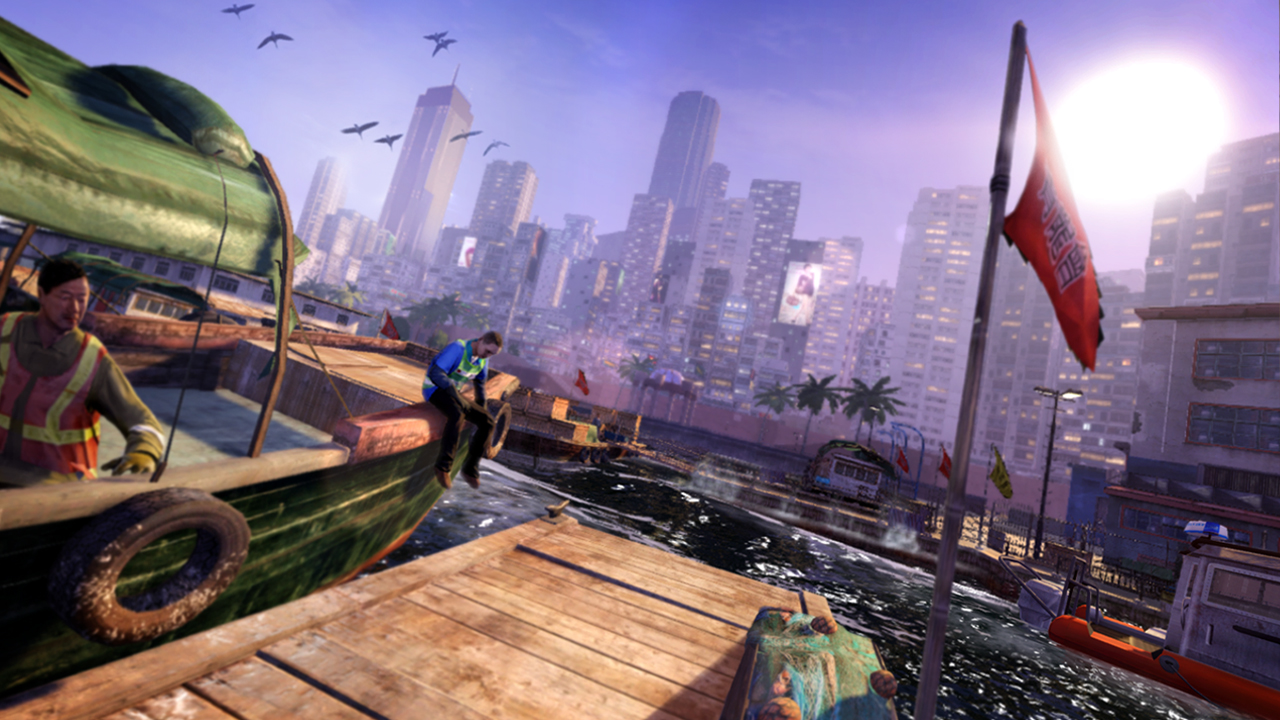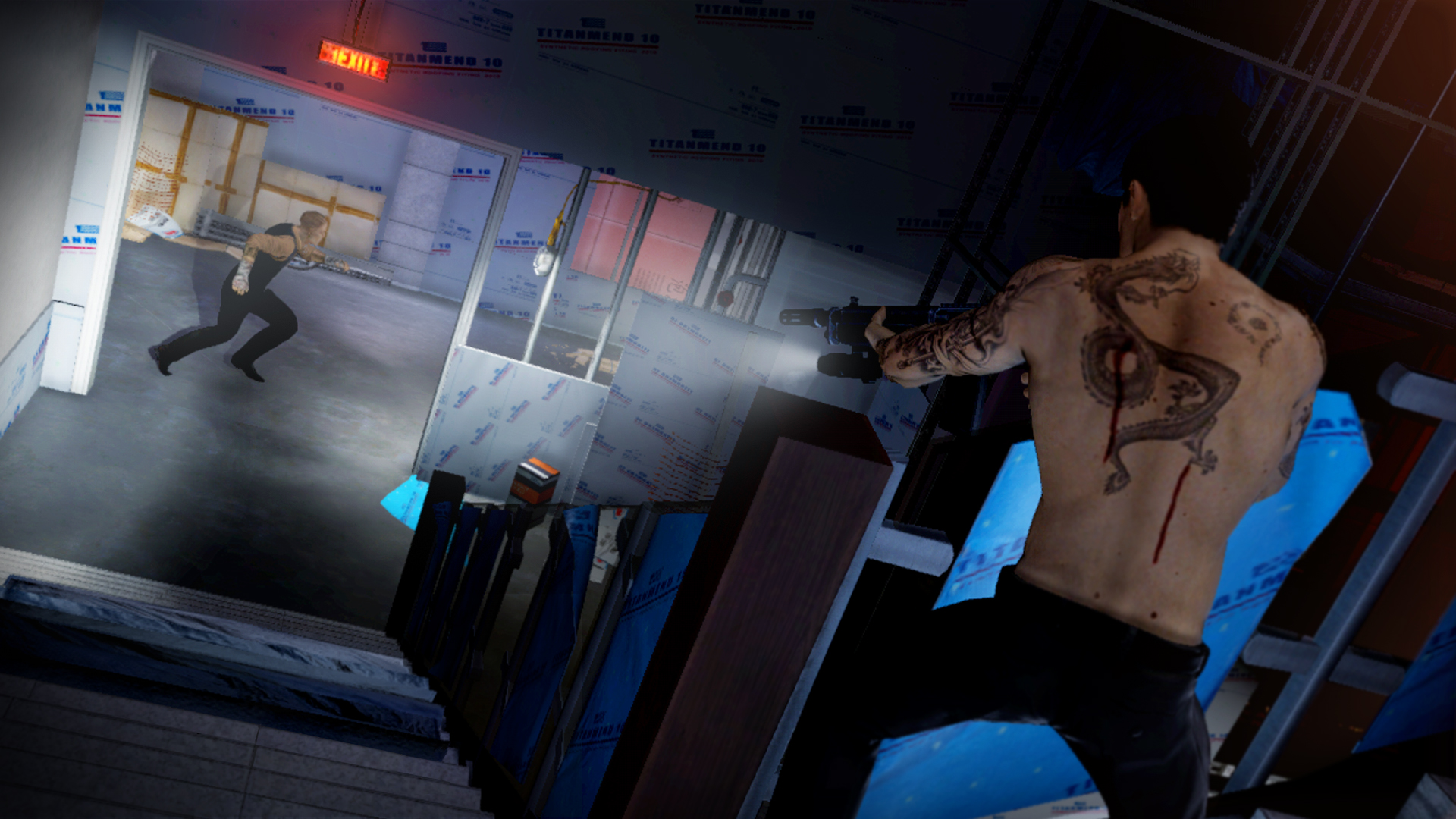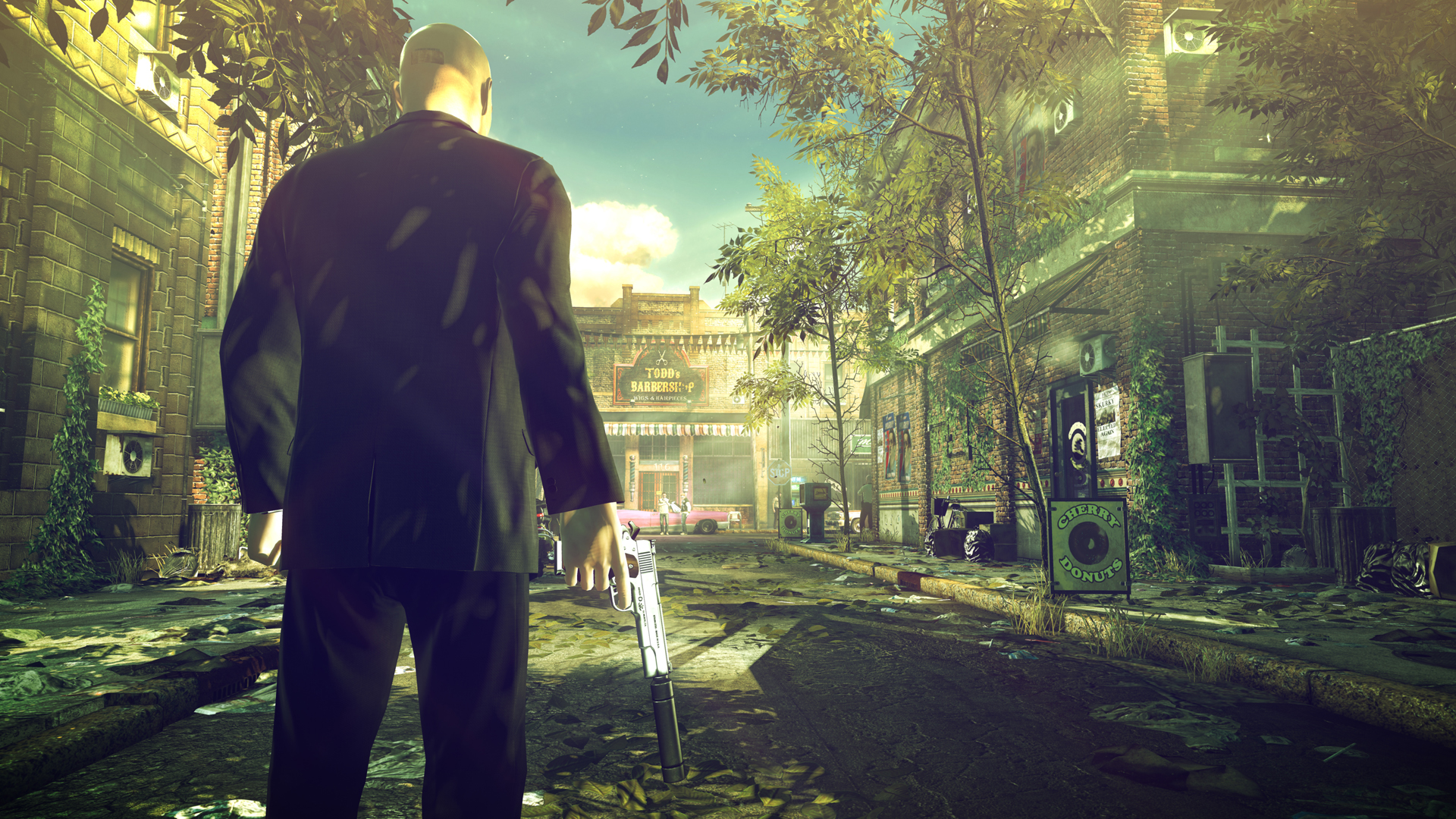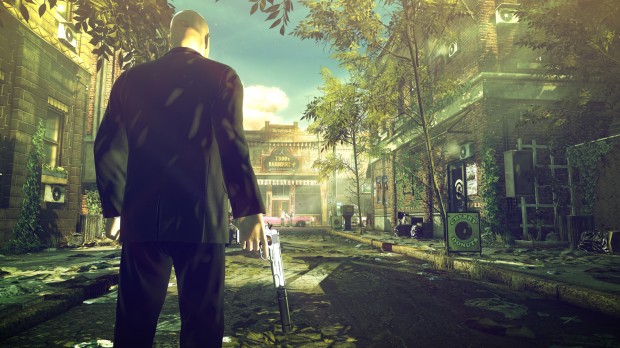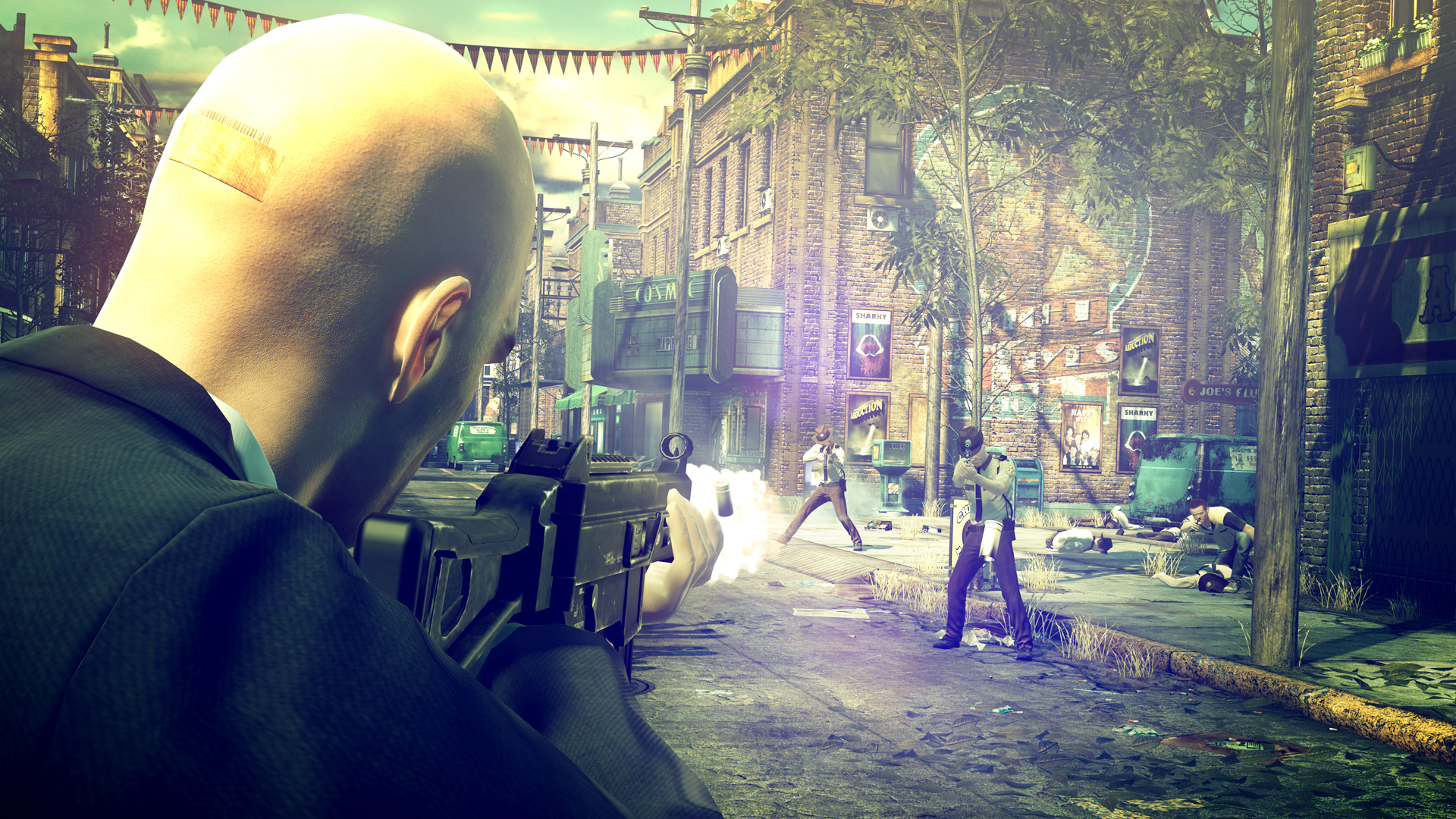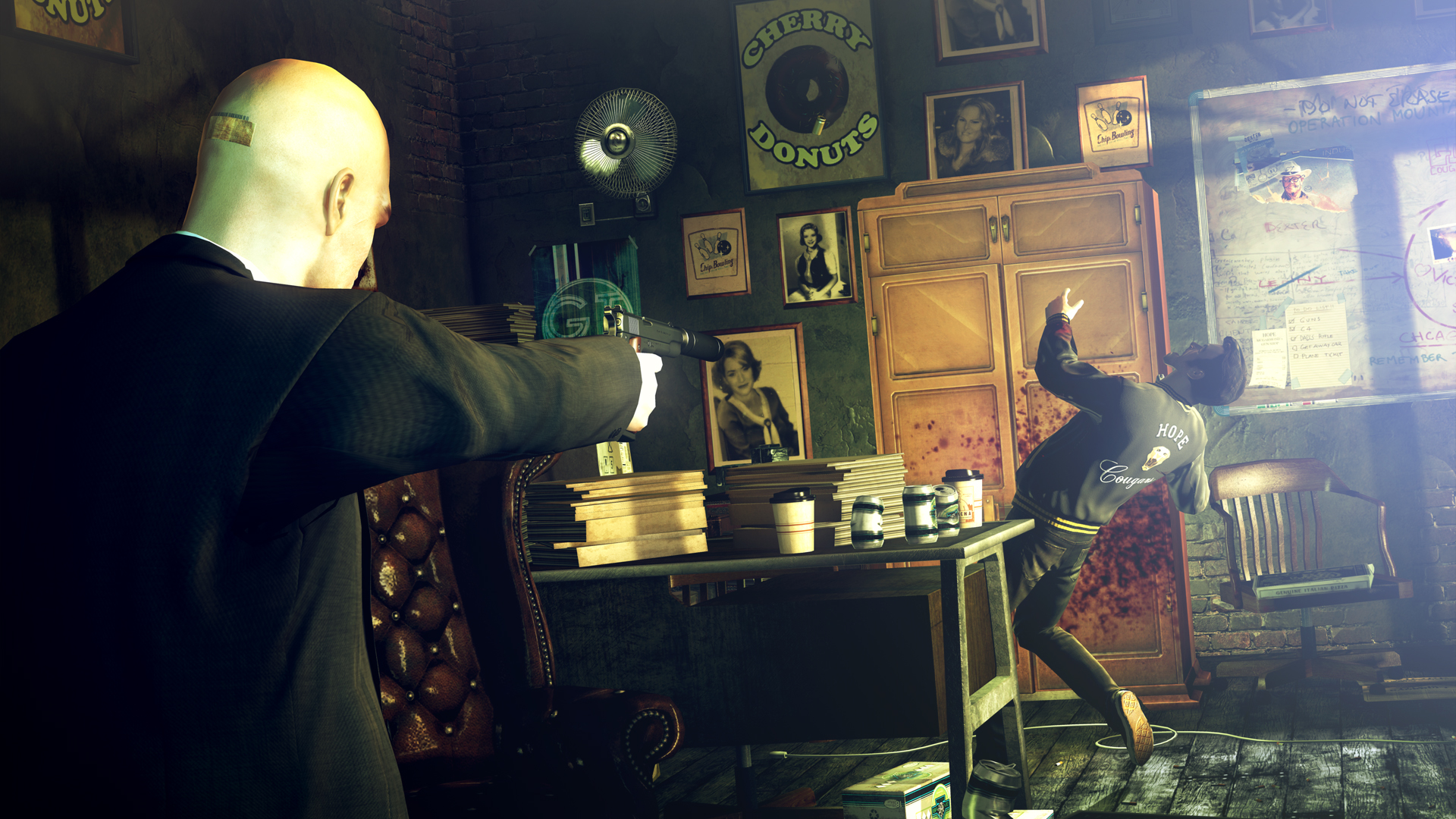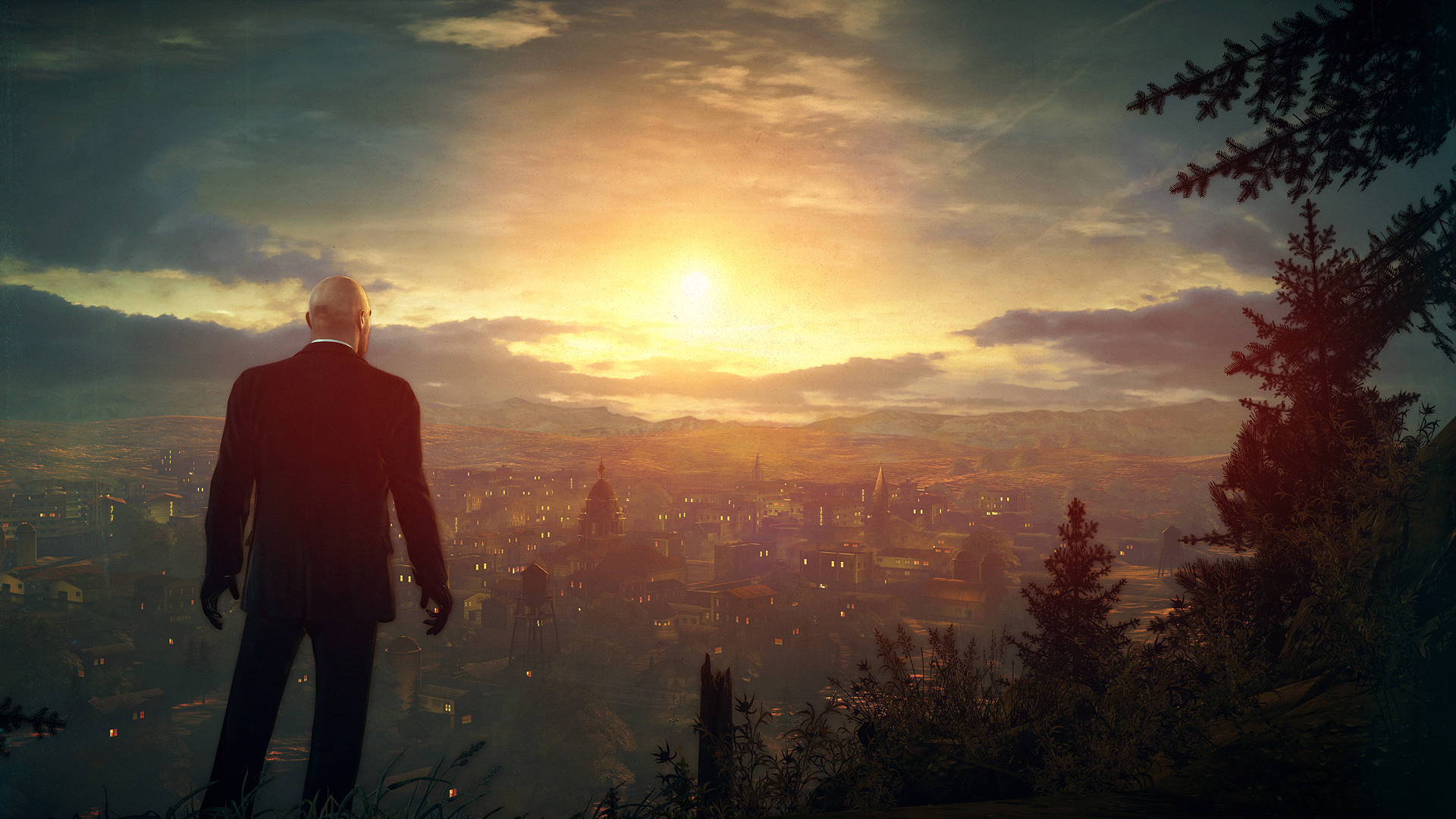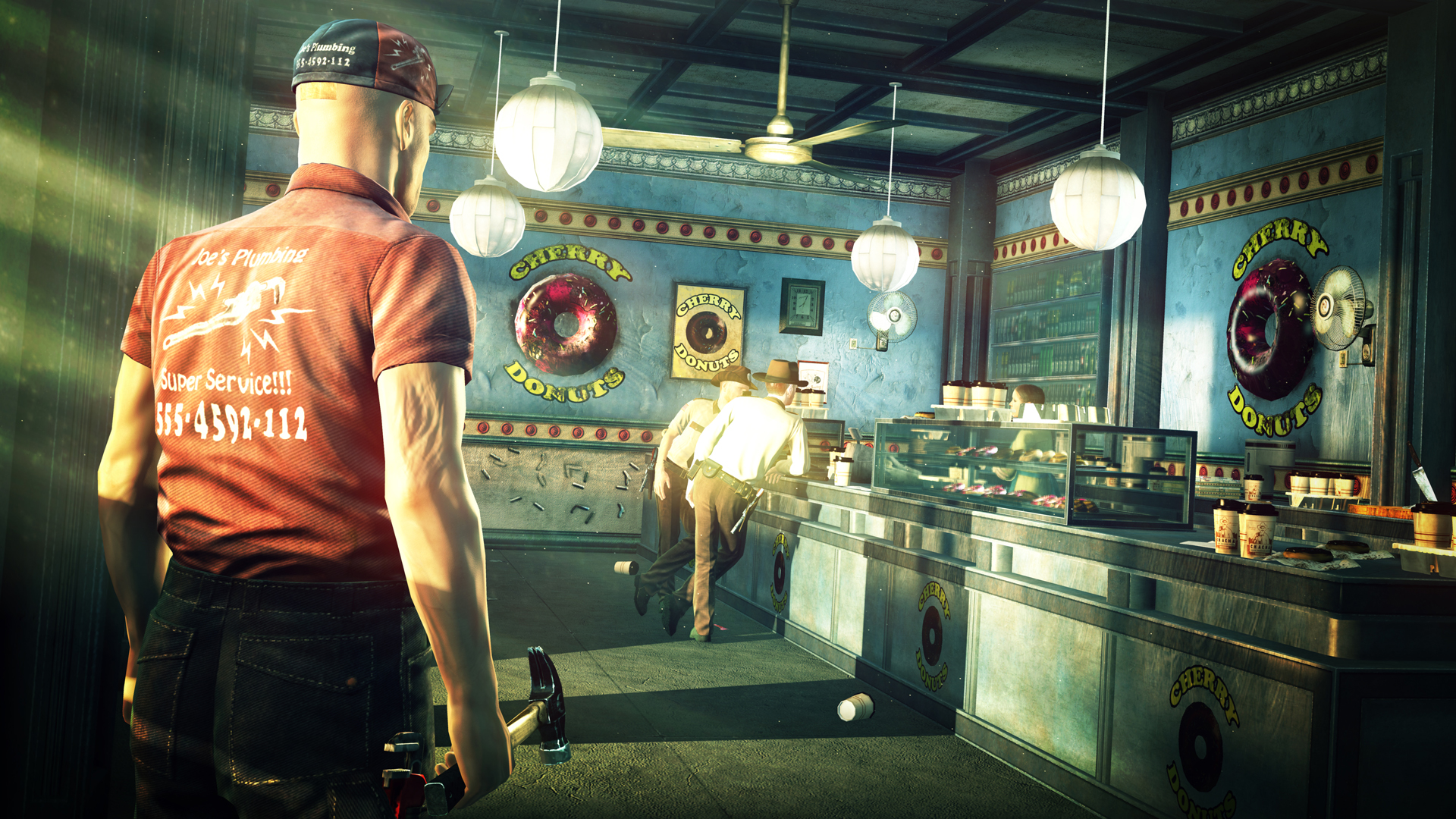Codemasters has released some new screenshots of their F1 2012 racing title, which is due out this November – enjoy!
Author - Jerry Paxton
BURLINGAME, Calif. – JUNE 5, 2012 – TECMO KOEI America today announced that the new generation of DEAD OR ALIVE combat, DEAD OR ALIVE 5, will be available in stores and online retailers on September 25, 2012. After taking a hiatus, the widely recognized series returns with a new look and feel while retaining the legacy that established the series as a core fighting contender. Created by Team NINJA, DEAD OR ALIVE 5 will be published by TECMO KOEI America for the PlayStation®3 computer entertainment system and Xbox 360® video game and entertainment system from Microsoft. TECMO KOEI is showcasing DEAD OR ALIVE 5 at E3 (South Hall booth #2047) with both in-depth demos and the launch of the exclusive DEAD OR ALIVE 5 tournament series presented in collaboration with the IGN Pro League (IPL).
“Our team is focused on making September 25th a special ‘DOA Day’ for all fans of intense martial arts combat,” said Yosuke Hayashi, Team NINJA leader. “As we approach the finish line for development of DEAD OR ALIVE 5, it’s exciting to see all the signature characters, fighting styles, and destructible fighting stages come together to create a powerful DEAD OR ALIVE experience.”
DEAD OR ALIVE 5 incorporates a variety of martial arts fighting techniques into its distinctive fighting style to create a new generation of intense DEAD OR ALIVE combat. In the game, players will once again take on the roles of the cast of DEAD OR ALIVE fighters in an action-packed brawler set in visually striking locations from around the world. The famed DEAD OR ALIVE hand-to-hand combat returns in DOA5, supported by new 3D stages that incorporate a fresh look and feel. As a fight progresses, the dynamic backdrops will be altered and skilled fighters will be able to utilize the changing environment to their strategic advantage.
The cast of characters for DEAD OR ALIVE 5 includes notables from the DEAD OR ALIVE series and for the first time in the series’ history, new fighters from other fighting titles, namely Virtua Fighter. Joining Virtua Fighter’s Akira Yuki as previously announced, Sarah Bryant was today revealed by TECMO KOEI as the second new cast member from Virtua Fighter to be available at launch.
Kicking off at TECMO KOEI America’s E3 booth (South Hall, Booth #2047) with an exciting competition, the IPL’s DEAD OR ALIVE 5 pro gaming tournament will continue throughout the summer culminating in the crowning of the “I’m a Fighter” world champion shortly before the game’s launch in September. The E3 tournament will qualify the first set of finalists for tournament series to find the ultimate DEAD OR ALIVE 5 master, with each match being streamed on large screens and live broadcast on http://doa.ign.com. Come early for the best viewing spots as crowds are sure to gather!
- Tuesday, June 5th: 1PM: 1st Tournament | 4PM: 2nd Tournament
- Wednesday, June 6th: 12PM: 3rd Tournament | 3PM: 4th Tournament
- Thursday, June 7th: 12PM: Tournament Finals
BURBANK, Calif. – June 5, 2012 – Step into the Arkham action like never before! Warner Bros. Interactive Entertainment and DC Entertainment today announced Batman: Arkham City™ Armored Edition for the Wii U™ system from Nintendo. Developed by WB Games Montréal the game delivers the same impactful story and gameplay of the award-winning blockbuster created by Rocksteady Studios, now with enhanced gameplay features made possible with Wii U and the Wii U GamePad™. The game is scheduled for release holiday 2012.
Batman: Arkham City Armored Edition contains all of the content from Batman: Arkham City, including all available downloadable content, and introduces Battle Armored Tech (B.A.T.) Mode and the new Armored Suits for both Batman and Catwoman. Fans can become the Dark Knight like never before with the upgraded battle suit that gives players an additional power-up by allowing them to build kinetic energy during combat. When activated, players enter B.A.T. mode and dole out more damage than previously possible.
“Batman: Arkham City Armored Edition harnesses the power of the Wii U system and the Wii U GamePad with features that allow fans to further immerse themselves in the role of Batman like never before,” said Martin Tremblay, President, Warner Bros. Interactive Entertainment. “WB Games Montréal evolved the incredible hit game by Rocksteady into a truly unique experience on Wii U.”
“WB Games Montréal is very excited to unveil the all new Wii U features we’ve created in Batman: Arkham City Armored Edition,” said Reid Schneider, Vice President and Executive Producer, WB Games Montréal. “The new controller allows for a different twist on the Batman: Arkham City game, as players now have the power of the Batcomputer and gadgets in the palm of their hands.”
The Wii U GamePad provides instant access to the wrist-mounted Batcomputer throughout the game, allowing players to use the touch screen to seamlessly select objectives, choose their gadget, track forensic evidence, upgrade their gear, detonate explosive gel, and more, all while remaining immersed in the action. Additionally, all gadgets have been reimagined to utilize the power of the GamePad, offering an unprecedented level of accuracy when using the Batarang and scanning for clues.
Batman: Arkham City builds upon the intense, atmospheric foundation of Batman: Arkham Asylum, sending players flying through the expansive Arkham City – five times larger than the game world in Batman: Arkham Asylum – the new maximum security “home” for all of Gotham City’s thugs, gangsters and insane criminal masterminds. Featuring an incredible Rogues Gallery of Gotham City’s most dangerous criminals including Catwoman, The Joker, The Riddler, Two-Face, Harley Quinn, The Penguin, Mr. Freeze and many others, the game allows players to genuinely experience what it feels like to be The Dark Knight delivering justice on the streets of Gotham City.
For more information on Batman: Arkham City Armored Edition, visit www.facebook.com/
LOS ANGELES, CA (June 5, 2012) – Paramount Pictures and leading video game publisher and developer NAMCO BANDAI Games America Inc. today gave fans the first look at the key villain to be featured in the upcoming Star Trek™ video game inspired by J.J. Abrams’ Star Trek (2009) film reboot. The announcement made at the Electronic Entertainment Expo (E3), revealed that a legendary lizard-like race known in Trek lore as “The Gorn” will play the destructive and villainous role in the video game releasing in early 2013. The co-op game is based on a standalone storyline that continues the adventure of iconic characters Captain James T. Kirk and Mr. Spock as they work together to stop the Gorn, an enemy race bent on conquering the galaxy.
“The Gorn are among the most iconic villians in the Star Trek universe and their role in this game certainly lives up to that persona ,” said Brian Miller, Senior Vice President at Paramount Pictures and lead game producer. “Kirk and Spock find themselves in an incredibly challenging amount of mayhem as they confront the Gorn throughout the game.”
More than just lizard-skinned foes, the Gorn are a blood-thirsty race determined to conquer the galaxy. A true military dictatorship, the Gorn are made up of billions of self-sacrificing warriors across thousands of colonies, each focused on the conquest of alien races. By utilizing their chaos-causing infectious venom, the Gorn seed mayhem and destruction as they destroy populations and deplete planets of their resources.
“Great villains give our favorite characters a chance to become heroes in the process of attempting to eliminate a powerful threat, and Star Trek fans have been eagerly anticipating the moment when the antagonists of the game would be revealed,” said Carlson Choi, VP of Marketing at NAMCO BANDAI Games America Inc. “This is one of those moments and we couldn’t be more excited to give gamers a glimpse at the challenges that lie ahead for Kirk and Spock.”
The Gorn range in size and abilities, infecting their foes with venom that can poison, cause hallucinations, and even kill. From the smaller infantry Gorn Rushers, to the larger Gorn Warriors and the massive Gorn Brutes, the Gorn provides a serious direct threat, while the wall-climbing Gorn females showcase the cunning for which this race is feared. Technologically capable and possessing the antithesis of Federation ideals, the Gorn pose a devastating threat to Starfleet, the Enterprise, and its crew.
With a storyline occurring after the events of J.J. Abram’s 2009 Star Trek reboot, the Star Trek video game puts players in the shoes of seminal heroes Captain James T. Kirk and Mr. Spock, inviting them to work together to take on the ferocious Gorn in this epic action adventure. Built from the ground up as the ultimate co-op experience, players are set on a journey of immense proportions across unexplored planets and enemy battleships with the latest 23rd century weapons and gear. Kirk and Spock’s complementary personalities result in the most fully realized and varied co-op experience for this console generation.
Under a license from CBS Consumer Products, the game is being developed by Ontario-based developer Digital Extremes (Bioshock 2, Unreal Tournament, Dark Sector, The Darkness II) with production being overseen by Paramount Pictures and a scheduled release in early 2013 for Xbox 360® video game and entertainment system from Microsoft, PlayStation®3 computer entertainment system and Windows PC.
Attendees of E3 at the Los Angeles Convention Center June 5-7 can see a live demonstration of the Star Trek game and take photos in the Enterprise captain’s chair at the NAMCO BANDAI Games Booth # 1637 (located in the South Hall).
For more information on the Star Trek video game, please visit www.startrekgame.com and follow the game on Twitter at www.twitter.com/star_trek_game.
For more information about NAMCO BANDAI Games, please visit http://www.namcobandaigames.com.
LOS ANGELES – June 5, 2012 – Nyko Technologies®, the leading gaming peripherals manufacturer, unveiled their latest products at the Electronic Entertainment Expo (E3). A stalwart exhibitor at the game industry’s headline event, Nyko this year announced a bold new product line designed to enhance our experience with the evolving range of consoles, handhelds and mobile devices that today’s gamers enjoy.
“With the tablet evolving into a dedicated gaming platform, it becomes our duty to supply the gamer embracing these devices with the controls and functionality they are accustomed to,” said Chris Arbogast, director of marketing, Nyko Technologies. “At the same time we have introduced our Free Fighter arcade stick that caters to the fans of fighting games who need precision control and customization options.”
Nyko’s E3 2012 product line-up includes:
The PlayPad Pro is Nyko’s full-sized wireless Bluetooth® gaming controller for Android tablet devices. The controller features dual analog sticks, a d-pad, face buttons and shoulder bumpers for a console-style control experience on Android devices. Nyko’s complementary Playground app will offer backwards compatibility for other Android games and a variety of button-mapping features, including customized controller layout. The PlayPad Pro will be available at select retail stores nationwide Holiday 2012.
The PlayPad is a travel-sized tablet controller with dual analog sliders, and includes a collapsible tablet stand and carrying case for console-like precision gaming on the go. Like the PlayPad Pro, the PlayPad controller includes Nyko’s Playground app and works with any Bluetooth-enabled device running Android 3.0 or higher. The PlayPad will be available at select retail stores nationwide Holiday 2012.
The Free Fighter for PlayStation® 3 is an arcade-quality fight stick with eight face buttons, and a unique ambidextrous design for right or left-handed use. Compatible with all standard fighting games, the Free Fighter is made with authentic Japanese Sanwa® Denshi arcade-quality parts and includes an expandable base for comfort and security during lap-top use. The Free Fighter includes four fully customizable macro buttons for quick access to combos, as well as two variable speed turbo buttons for fast, slow or user-created tap speed. The Free Fighter will be available at select retail stores nationwide in September 2012 and will retail for an MSRP of $179.99.
The Power Grip Pro for the Nintendo 3DS is an analog slider controller case with extended battery. The hard protective case helps to prevent scratches and dings, and the ergonomic design provides optimal comfort and control. Gamers will enjoy the added control and functionality of the analog slider as well as triple the playtime. The Power Grip Pro for Nintendo 3DS will be available at select retail stores nationwide in October 2012.
The Power Grip for the PlayStation® Vita is an ergonomic grip with built-in rechargeable battery that enables a better hold on the Vita with controller-like grips and up to three times the battery life. The device snaps over the back of the Vita while allowing access to all buttons and the rear touch panel. The Power Grip for the Vita will be available at select retail stores nationwide in August 2012 and will retail for an MSRP of $29.99.
Nyko will also be showing off the latest versions of upcoming items in their Yo Gabba Gabba! product line including Muno Time—the singing, dancing alarm clock charging dock, and the Brobee Hip Pack, a fuzzy, soft carrying case for your handheld or mobile devices. Muno Time will be available at select retail stores nationwide in September 2012 and will retail for an MSRP for $129.99. The Brobee Hip Pack will be available September 2012 and will retail for an MSRP of $29.99.
All of these products will be on display at Nyko’s E3 booth located in the Los Angeles Convention Center, West Hall, #5000.
BURBANK, Calif. – (June 5, 2012) – Paint and thinner will once again alter the universe on November 18, 2012 as Disney Interactive announces the launch date for its highly-anticipated action adventure game “Disney Epic Mickey 2: The Power of Two” at the Electronic Entertainment Expo (E3 Expo). In celebration of the newly revealed launch date, industry luminary Warren Spector and Disney Interactive’s Junction Point are showcasing never-before-seen areas of “Disney Epic Mickey 2: The Power of Two” and an exclusive exhibit presented by D23: The Official Disney Fan Club at the Disney Interactive booth (South Hall #1001) at the E3 Expo will feature artifacts from the Walt Disney Archives that pay tribute to characters featured in the video game.
“Our fans have told us how eager they are for a sequel to ‘Disney Epic Mickey’ and I’m happy to be able to reveal the launch date for “Disney Epic Mickey 2: The Power of Two,” said Warren Spector, creative director and vice president, Junction Point. “I think players are going to be excited by the new areas of the game being revealed at E3 where they will need to determine who their friends really are as they team up Mickey Mouse and Oswald to restore balance in Wasteland.”
E3 Expo attendees will have the opportunity to experience “the power of two” as Mickey Mouse and Oswald join forces for the first time to overcome obstacles in a game level inspired by the classic 1937 Silly Symphonies cartoon, “The Old Mill.” Players will also engage in a heroic struggle to save Wasteland as they battle a giant animatronic blotworx dragon modeled after the Pete’s Dragon Float from “The Main Street Electrical Light Parade,” long a fan favorite at the Disney theme parks.
Additionally, attendees that come by the Disney Interactive booth will have an opportunity to browse an exclusive exhibit of artifacts from the Walt Disney Archives, some on public display for the first time ever, from Disney’s rich 80+ year history. From Oswald the Lucky Rabbit and Mickey Mouse, to Gremlin Gus and Clarabelle Cow, the exhibit will pay tribute to beloved characters featured in “Disney Epic Mickey 2: The Power of Two.”
“Disney Epic Mickey 2: The Power of Two” returns Mickey Mouse and Oswald the Lucky Rabbit to Wasteland, an alternate world filled with more than 80 years of forgotten Disney characters and theme park attractions. But for the first time, Mickey and Oswald will join forces as true partners – Mickey with the magical paint brush that allows him to wield paint and thinner, and Oswald with a powerful remote control that allows him to command electricity. This new co-op play further enhances the idea that “PlayStyle Matters” – a unique approach to gameplay pioneered by Warren Spector where players dynamically tackle different challenges in order to explore all possibilities and storylines, but with consequences for their chosen actions.
Development for “Disney Epic Mickey 2: The Power of Two” for the Wii™ system from Nintendo, Xbox 360® video game and entertainment system from Microsoft, and the PlayStation®3 computer entertainment system is being led by Disney Interactive’s Junction Point. Supporting the latest technology, the game will also feature full support for the PlayStation®Move motion controller. “Disney Epic Mickey: Power of Illusion” for the Nintendo 3DS™ hand-held system is under development by critically-acclaimed developer DreamRift, in collaboration with Junction Point. The games are currently unrated by the ESRB. For more information, go to www.disney.com/disneyepicmickey.

